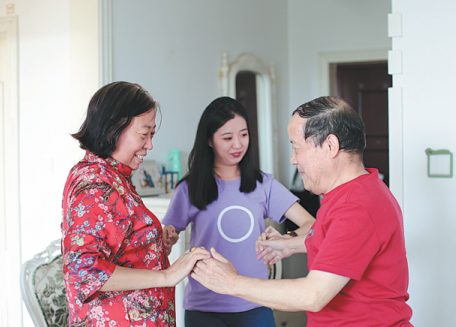

When preparing for the project, she tried playing music at home and doing a few basic rhythmic warmup exercises with her grandma and then improvising some dance moves. She says her grandma always looks very relaxed when they dance together, and her moves resemble the folk dances from the old days.
The experience proved helpful for the dance-therapy project.
"In this program, I'm not a teacher but simply a guide and sharer so that the dancers can move freely to the music, experience release and soothe their bodies and minds," she says.
Apart from helping the participants exercise and express themselves, the instructors also designed a lot of interactive moves, such as clapping or hugging one another, so that the dancers learn to communicate with others and be more open to everyday interpersonal interactions.
Program instructor Sun Di is a dance-therapy instructor at Beijing Dance Academy. She says the school's classes tend to focus more on the theoretical, and the project inspired her to design workshops suited to the practical needs of participants in her future dance-therapy practice.
"During the preparation, we did research and consulted with institutes specializing in cognitive disorders, and selected music that resonates with participants," Sun says.
"Also, as professional dance choreographers, we tend to design dance moves that are complicated, which might intimidate participants without dancing backgrounds. So, for these sessions, we must have a clear idea of what's appealing and acceptable to participants."